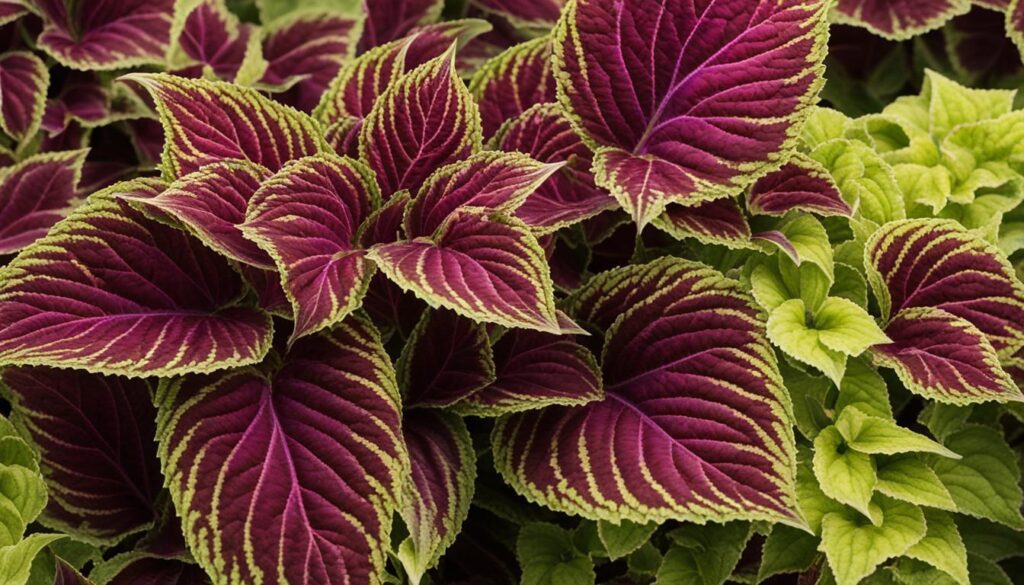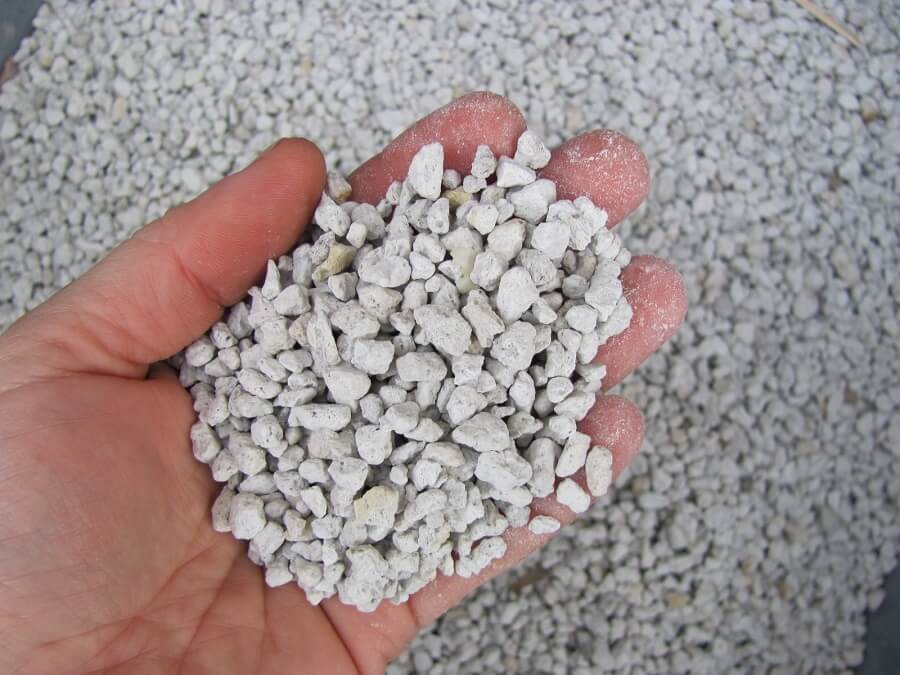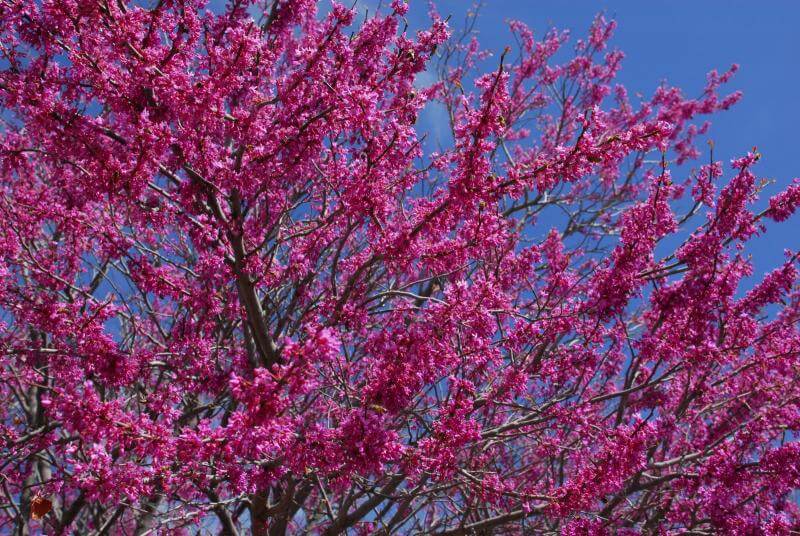Looking to add a pop of vibrant color to your garden landscaping? Consider incorporating purple ground cover flowers into your landscape design. These colorful ground cover plants can transform any dull space into a visually stunning and inviting garden.
Purple ground cover flowers come in a variety of stunning options, including sweet peas, Salvia hybrids like ‘Ignition Purple’, violas, coleus, lavender, dianthus ‘Jolt Pink’, and sunflowers. Not only do these plants offer beautiful blooms, but they also provide excellent heat and humidity tolerance, making them perfect for flower borders, cutting gardens, and wildlife plantings.
Key Takeaways:
- Purple ground cover flowers can add vibrant color to your garden landscaping.
- Popular purple ground cover flower options include sweet peas, Salvia hybrids, violas, coleus, lavender, dianthus, and sunflowers.
- These plants offer not only beautiful blooms but also excellent heat and humidity tolerance.
- Purple ground cover flowers are ideal for flower borders, cutting gardens, and wildlife plantings.
- By incorporating purple ground cover flowers into your garden, you can create a visually stunning and inviting space.
Sweet Pea – Fragrant and Ornamental
Sweet pea (Lathyrus odoratus) is a fragrant and ornamental vine that blooms in spring. It produces brightly hued flowers in pastel shades of pink, purple, and white. The sweet scent of sweet pea flowers adds an enchanting aroma to the garden. This annual vine grows up to 3 feet tall and can be trained to ramble on trellises, fences, or gates. Planting sweet peas near a garden gate or doorway allows you to enjoy the scent as you pass by.
For those who appreciate both visual beauty and fragrance in their garden, sweet peas are the perfect choice. Their delicate flowers captivate the eye with their vibrant colors, while their intoxicating scent fills the air with sweetness. Whether used as a focal point in a flower bed or as a graceful vine climbing up a trellis, sweet peas add a touch of elegance to any outdoor space.
The ornamental nature of sweet peas makes them a versatile addition to any garden design. Their trailing vines create a lush and romantic effect when cascading over a wall or spilling out of a hanging basket. In addition to their visual appeal, sweet peas are also very easy to grow, requiring minimal maintenance and care. They thrive in full sun or partial shade and prefer well-drained soil.
Whether you’re a seasoned gardener or just starting out, sweet peas are a delightful choice that will bring beauty and fragrance to your outdoor space. Their bright and colorful blooms will brighten up any garden, and their enchanting scent will create a soothing and inviting atmosphere. Plant sweet peas this spring and enjoy a season of fragrant beauty in your garden.
Salvia Hybrid ‘Ignition Purple’ – Beauty with Heat Tolerance
VIBE ‘Ignition Purple’ is a hybrid of Salvia and jamensis that offers both beauty and brawn. This vibrant purple-flowering plant is highly prolific in spring and summer, adding a burst of color to any garden. It is known for its excellent heat and humidity tolerance, making it a perfect choice for areas with harsh weather conditions.
‘Ignition Purple’ grows to a height of 18-24 inches and has a wide spread, making it suitable for flower borders, cutting gardens, and wildlife plantings. It is hardy in Zones 7-11, ensuring its ability to thrive in a wide range of climates.
With its eye-catching purple flowers and robust nature, Salvia hybrid ‘Ignition Purple’ is a must-have for any garden. Whether you’re looking to enhance your flower borders, create stunning cutting gardens, or attract wildlife to your outdoor space, this plant delivers both visual appeal and practical benefits.
Violas – Frost-Tolerant and Festive
Violas are an excellent choice for ground cover plants in your garden. These beautiful flowers are known for their frost tolerance and compact size, making them a versatile option for various garden designs. While violas are often grown as annuals, they can also overwinter successfully in many regions, giving you long-lasting enjoyment.
One of the great advantages of violas is their suitability for container gardening. Their small stature and free-flowering habit make them perfect for adding color and charm to small spaces. Whether you have a balcony, patio, or limited garden area, violas can thrive and bring joy to your surroundings.
What makes violas even more appealing is their wide range of festive colors. From pure white to charming lilac, vibrant purple, sunny yellow, or eye-catching orange, violas offer an array of options to suit your personal style and garden aesthetic. If you’re looking for a stunning combination of lemon and peach colors, consider the Sunset Boulevard mix.
Violas are readily available at local garden retailers, making it convenient to find and incorporate these delightful flowers into your garden design. Whether you use them as ground cover, in containers, or as accents in flower borders, violas will add a festive touch and bring vibrant colors to your outdoor space.
These frost-tolerant and compact violas are perfect for container gardening and will brighten up your garden with their festive colors. Incorporate these charming flowers into your landscape to create a visually appealing and inviting outdoor space.
Coleus – Variegation and Color in One
Coleus (Solenostemon scutellariodes) is a popular annual plant known for its striking variegation patterns and colorful leaves. With a wide range of color choices, from hues of green and yellow to red, pink, purple, bronze, and orange, coleus plants offer a vibrant addition to any garden. Some varieties have solid colors, while others have variegated leaves in beautiful patterns. Coleus typically grows to a height of 10 to 15 inches and also produces summer flowers. These plants are not only visually appealing but also low maintenance, making them a great choice for gardeners looking to create an amazing river rock flower bed.
When selecting coleus plants for your garden, consider the variegation patterns and colors that will complement your desired aesthetic. Whether you prefer a bold and dramatic look or a more subtle and delicate design, coleus offers options for every style. The vibrant foliage of coleus can serve as a focal point or provide striking contrast when paired with other plants. Incorporating coleus into your river rock flower bed can create a dynamic and visually stunning display.
One of the great advantages of coleus is its ability to thrive in various light conditions. While they prefer partial shade, coleus plants are versatile and can adapt to full sun or full shade as well. They are also relatively drought-tolerant, making them suitable for dry climates or areas with limited water availability. However, consistent watering is still essential to keep coleus plants healthy and vibrant.
To ensure optimal growth, plant coleus in well-drained soil enriched with organic matter. Regular fertilization during the growing season will promote healthy foliage growth and vibrant colors. Pruning coleus plants can help maintain their bushy shape and prevent legginess. Simply pinch back the growing tips to encourage branching.
Whether you use coleus as accent plants or as the main feature in your river rock flower bed, their variegation and color will undoubtedly add visual interest to your garden. Experiment with different varieties and color combinations to create a unique and eye-catching display. With their low-maintenance nature and stunning foliage, coleus plants are a fantastic choice for any gardener.
Lavender – Colorful and Fragrant Herb
Lavender (Lavandula spp.) is a colorful and fragrant herb that adds a touch of elegance to any garden. The lavender flowers not only provide visual appeal but also dry nicely and can be used in potpourri or as sachets.
What’s more, lavender plants have an additional benefit – they are known for their ability to repel mosquitos and flies in the garden, making them a practical choice. To ensure the health and productivity of your lavender plants, it’s essential to plant them in sunny locations with well-drained, slightly alkaline soil.
Most lavender varieties are hardy in Zones 5 or 6-9, depending on the species, making them suitable for a wide range of climates. By incorporating lavender into your garden, you not only add beauty but also practical benefits.
Conclusion
Purple ground cover flowers are a fantastic addition to your garden landscape. Their vibrant colors and low maintenance characteristics make them the perfect choice for enhancing the visual appeal of your outdoor space. Whether you opt for sweet peas, Salvia hybrids like ‘Ignition Purple’, violas, coleus, or lavender, these purple ground cover flowers will transform a dull area into a captivating and vibrant garden.
Not only do these flowers provide aesthetic beauty, but they also offer practical benefits. Some varieties, such as lavender, repel mosquitos and flies, making your garden a more enjoyable place to spend time. Additionally, these flowers attract beneficial wildlife, contributing to a balanced and thriving ecosystem.
Incorporating purple ground cover flowers into your landscape design is a surefire way to create a beautiful and low maintenance garden that will impress visitors throughout the seasons. So why wait? Add these vibrant and versatile flowers to your outdoor space today and enjoy the stunning visual appeal and practical benefits they bring.
Are Blue Ground Cover Flowers as Easy to Grow as Purple Ground Cover Flowers?
Yes, the best ground cover blue flowers are just as easy to grow as purple ground cover flowers. Blue ground cover flowers like creeping phlox, lobelia, and campanula spread quickly and require minimal maintenance. They are ideal for adding color to borders, rock gardens, and pathways.
FAQ
What are some examples of purple ground cover flowers?
Some examples of purple ground cover flowers include sweet peas, Salvia hybrids like ‘Ignition Purple’, violas, coleus, lavender, and dianthus ‘Jolt Pink’.
What are the benefits of incorporating ground cover plants with good foliage?
Ground cover plants with good foliage provide long-lasting visual appeal, even when they are not in bloom or producing berries.
Can lavender plants repel mosquitos and flies in the garden?
Yes, lavender plants have natural repellent properties and can help keep mosquitos and flies away from your garden.
What are some uses for the flowers of lavender plants?
The flowers of lavender plants can be dried and used in potpourri or as sachets. They add a pleasant scent to any space.
Are ground cover plants like violas frost-tolerant?
Yes, violas are frost-tolerant and can overwinter successfully in many regions. They are also well-suited for container gardening.
How tall do sweet pea vines grow?
Sweet pea vines can grow up to 3 feet tall and can be trained to ramble on trellises, fences, or gates.
What are some benefits of incorporating purple ground cover flowers in garden landscapes?
Purple ground cover flowers add vibrant colors, low maintenance characteristics, and practical benefits such as repelling mosquitos and flies or attracting beneficial wildlife.











